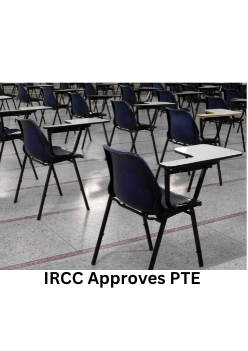If you are a nurse seeking to register and practice in primarily English-speaking countries, or for academic purposes, OET certification is an essential first step – it is a test that qualifies you as proficient in the English language for professional use.
Here at Hurray, we offer the best online OET coaching guaranteed to help you gain success in the exam! Individual-oriented and flexible, and bolstered by our 8 years of experience, you will find our OET online course to be well-suited to your needs – with the benefit of accessing it from wherever you are!
In this blog post, we will break down the OET writing test for you – along with a few tips and strategies suggested by our experienced and expert trainers, spearheading our OET online training programme. (ielts best institute)
*Update for Covid-19: For all of you staying home, we are here to assist you with your OET preparation during lockdown. All of our blog content can be used as frameworks guiding your practice and study efforts – so you can make the most of this time!
About the Writing Test
The test, involving let-writing, is designed to test your ability to communicate via writing, drawing on actual professional circumstances.
If you register for OET in the Nursing professional category, one of the options that your writing test may consist of includes a transfer letter.
In addition to the letter prompt, you will be provided with supporting details in the form of case notes, and other relevant documentation.
Check out our post OET Writing: Letter-writing for more details about the writing test.
Criteria (ielts consultancy near me)
This is the most important aspect of Letter Writing. There are six new grading criteria in OET Writing. They are:
1) Purpose- The candidate must state the purpose of their letter and make it very clear at the very beginning. The purpose should always be included in the first paragraph of the letter. You must state as to why the letter was written, as well as include what action needs to be taken by the reader.
2) Content- Here you must include all the relevant and necessary information in an accurate manner. In this part of the letter you can score highly provided that you write the required length. The given length is between 180-200 words. The word count itself is a guide and will not be penalised for writing below the word limit or over it. The most important thing here is to include information that is relevant and necessary. The important thing is to make sure you include everything that is necessary. For this analyse your task properly. (ielts training centre)
3) Conciseness and Clarity- This is associated with the Content criterion, where you are given scores for including relevant information. For this criterion, you will be marked for any irrelevant information you include. You must remember that this has to be related to the purpose of your letter mentioned in paragraph one. If it is not coherent then this will make the purpose of your letter less clear.
4) Genre and Style- This criterion assesses what kind of language you have used to write your letter. Remember there are different types of letters that are written as times to medical professionals or non- medical professionals. You must write using a formal style, and your language should reflect the kind of audience to whom you are addressing the letter. Medical terms or certain technical abbreviations are appropriate for a a medical professional. The same cannot be used when writing to a parent. Your writing should also be clinical, precise and non-judgemental.
5) Organisation and Layout - The organization of ideas is extremely important in letter writing. You must organize your letter properly. Use proper paragraphs to identify different points. The whole idea is that the information should be properly sorted so that retrieving the information will not be a problem. (best coaching center for ielts)
6) Language - This means that all the linguistic features will be tested here. The focus is on aspects of vocabulary and grammar. Tenses, articles, prepositions, verbs, sentences, punctuation, vocabulary, etc. is graded under this criterion. The focus is on how you use these aspects to properly express your ideas and highlight the requirement of the task. The range of grammar used in the letter is not directly assessed, only the accuracy. (ielts best institute)
All of the criteria now have a maximum grade of 7, except for Purpose which will be graded out of 3.
Performing the Task
-
Preparation
You will be given a time limit of 45 minutes to complete the task. It is suggested that the first 5 minutes be used to prepare for the task, with the remaining 40 minutes reserved for writing.
Keep the following guidelines in mind:
-
Read the prompt carefully and skim-read the case notes.
-
Identify the purpose of the letter – you will have to identify whether the letter is a discharge, transfer or referral. This is usually evident in the prompt itself – where the type of letter will be directly named OR you can infer the purpose from the information given.
-
Identify and make quick note of the information which is relevant, keeping in mind the prompt and the purpose of the letter.
-
Number your selected points, to form a particular order – you will use this order to structure your letter.
-
Remember that not all the information will be of use to a particular reader, depending on the purpose of the letter – choose your points carefully and with discretion.
-
Furthermore, you have to adhere to a word-limit of 180-200 words – this is possible if you successfully select only the most relevant information.
-
Writing
We suggest the following guidelines:
-
begin with a clear introduction, wherein the purpose of the letter is immediately apparent
-
divide your letter into short, clear paragraphs – depending on the nature and amount of content
-
there must be a clear concluding paragraph, typically containing a call to action
-
while the information in the case-notes will be given in point-form, you are expected to write in full sentences and paragraphs
-
any abbreviations or profession-specific vocabulary must be used, keeping in mind the target reader’s expected ability to understand
OET does not specify any particular letter-format or template – the only stipulation is that the format utilised must be clear and well-structured. See our post OET Writing: Letter-writing for more details.
Solved example
The following letter is based on a genuine OET test prompt. It is indicative only and can be modified as required.
Prompt:
In the case notes: “You are the nurse in a Community Health Centre. A patient you have been monitoring is moving to another city to live with his daughter.”
Details: medical history – type 2 diabetes, medications, resistance to taking medicines and dietary restrictions
Task: “Using the information given in the case notes, write a letter to the Community Health Nurse in Centreville, outlining the patient’s history and requesting ongoing monitoring.”
Quick tip: Here, it is not explicitly stated that this is a letter of transfer. However, based on the information given i.e. that the patient is moving, it can be inferred that this is a letter of transfer.
Letter:
Date: 13/04/2020
To
Community Health Nurse,
Eastern Community Health Centre, 456 East Street,
Centreville.
Subject: transfer of patient’s care to Eastern Community Health Centre
Dear sir/madam,
I am writing with regards to the transfer of Mr Peter Dunbar, aged 88, for monitoring by Eastern Community Health Centre, in advance of his relocation to Centreville, where he is to live with his daughter.
The patient was diagnosed with type 2 diabetes in August 2017. He was hospitalised for myocardial infarction in June 2019. He is presently showing signs for diabetic neuropathy, and is using a walking stick. He had a respiratory infection a few weeks ago. (IELTS Coaching Centre in Bangalore)
The medications currently prescribed for the patient include Metformin 500 mg t.d.s, Ramipril 5 mg daily for hypertension, Warfarin variable 3-5mg and Sotalol 40 mg daily. He has also been asked avoid salt, sugar, alcohol, fatty food.
The patient’s wife is recently deceased, and he has been self-catering. However, he has consistently been showing resistance to his medication regimen and dietary restrictions. He has been educated on the importance of both on two occasions, but continues to show resistance. He thus requires ongoing monitoring and encouragement. (ielts study abroad)
Upon discussion of the possibility of his moving in with one of his adult children, he is now to move in with his daughter in Centreville. She is to take care of his medicinal and dietary requirements. She is in need of education with reference to caring for the same.
As part of his care by Eastern Community Health Centre, I recommend that twice-weekly home visits be scheduled. I also request you to advise his daughter of the procedures for his care. (overseas ielts)
Do contact me if you require any clarifications of the case.
Thank you.
Yours sincerely,
Nurse.
Tips
-
Understand the writing task.
-
Identify the type of letter
-
Understand the case notes.
-
Spend around 3-4 minutes carefully reading and understanding the case notes.
-
Select case notes.
-
Choose only relevant information.
-
Plan your writing structure.
-
Organise case notes
-
Transform the case notes into a letter of between 180-200 words.
-
Use abbreviations where required.
-
Use the correct format
-
Mention the name if given otherwise only mention designation
For more how-to’s like these, and plenty of opportunities to put them into practice, you can depend on our OET online classes.
To learn more, reach out to us via email: info@hurrayedutech.com or call us on: 8971357938.











Post Comments